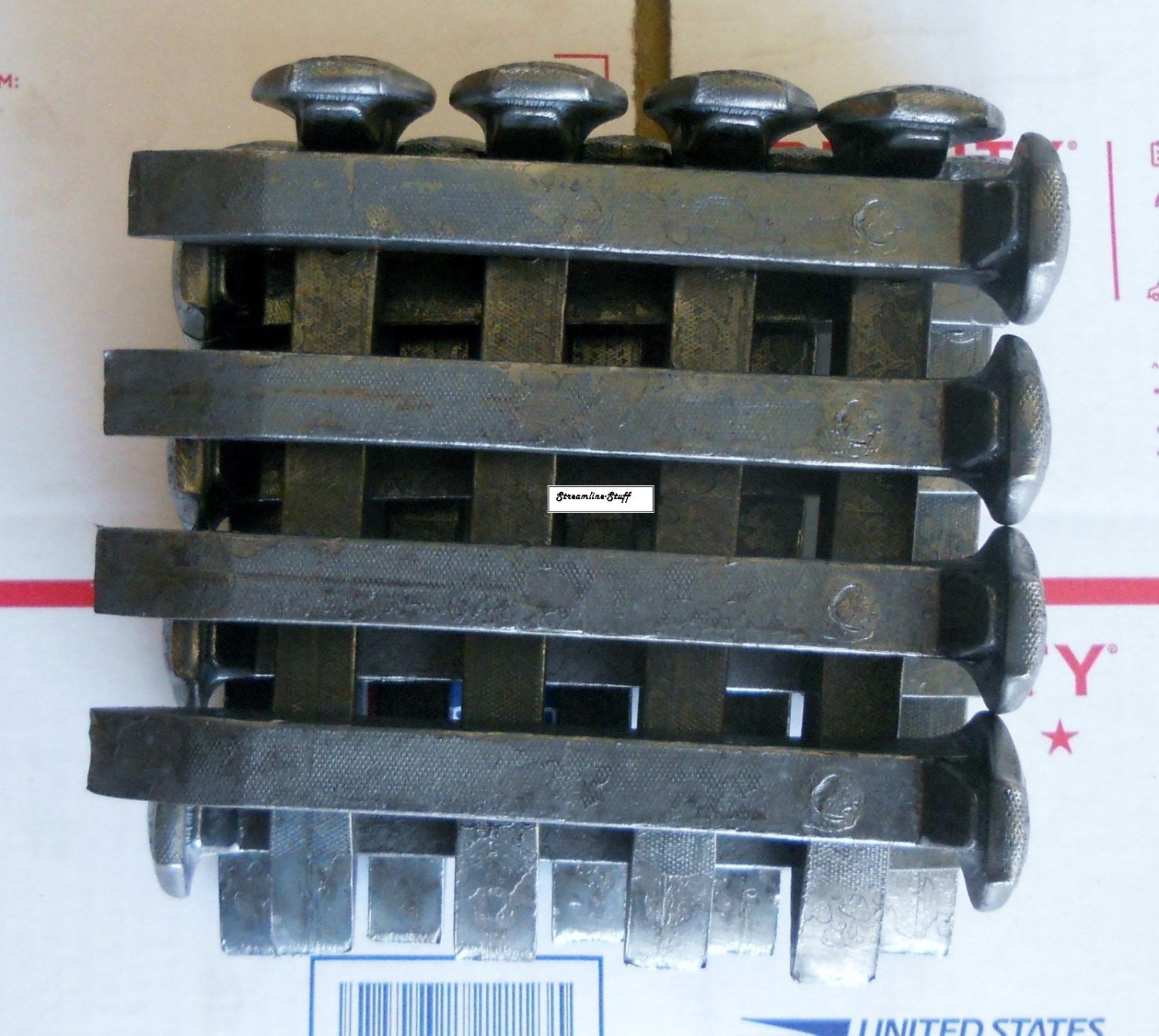


High-speed railway: The steel rails in the station (that is, the parking lot) use 60 rails (partial parking lines use 50 rails), and the main line (including station lines and auxiliary lines) is also 60 rails, but the steel rails of high-speed railways have higher requirements on flatness, and various sections. The steel rail is a complex alloy, in addition to the main component iron (Fe), there are five major elements, carbon (C), manganese (Mn), silicon (Si), phosphorus (P), sulfur (S), of course, there will be some decisive role of the trace elements vanadium (V), chromium (Cr), and some rare earth elements, etc., these elements merge with each other, due to different manufacturing processes, resulting in different physical properties of the steel rail. The online heat treatment is already mainstream, which is more energy-saving and more efficient.
#Railroad spike steel type Offline#
The heat-treated rails are reheated after the hot-rolling process, which are divided into online heat treatment and offline heat treatment. In fact, all of the rails are produced by the hot rolling process. Crane rail is used for crane railway.įor meeting various sizes of different countries around the world, steel rail can be process according to international standard, such as GB, AREMA, BS, UIC, JIS, DIN, AECE, and etc.Īccording to the manufacturing process, the steel rail is mainly divided into hot-rolled rails and heat-treated rails. There is a special kind of steel rail that is called crane rail. There are also 24kg rails and 18kg rails, of which rails of 43 rails and above are generally called heavy rails, otherwise, the steel rails weight below 43kg are called light rail. There are 38kg rails, 43kg rails, 50kg rails, 60kg rails, 75kg rails, etc. For example, we often say a 50kg rail, which means rails with a weight of 50kg/m, and so on. The type of steel rail is usually divided by weight. There are many ways for steel rail classification, such as weight, application, international standard, and etc. In modern times, with the increase of train speed and axle weight, the improvement of the requirements for stability, the improvement of production and manufacturing processes, the classification of rails is becoming more and more detailed. As the speed and weight of the train increase, the material of rails becomes steel step by step. At first it was a piece of square wood, and later the wood was covered with iron wrap. Rails were not like this at the beginning of their birth, or even the current material. The steel rails are always in an inconspicuous place for the train to crush and guide the train. Steel rail and other railway fasteners support the railway track system, including railway sleepers, rail joints, railroad spike, rail clips, track bolt and nut, etc. Steel rails are known to be an integral part of railway tracks.


 0 kommentar(er)
0 kommentar(er)
